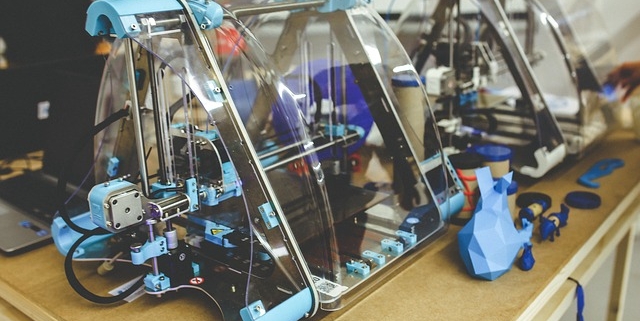With the advancement of 3D printing technology, inventors are able to manufacture medical devices to be used in the human body. Processes like these are submittable in an R&D Tax Credits claim.
Conventional medical technologies can no longer keep up with the pace of 3D printing innovations. This industry can now create complex geometries within printed medical devices which are fully customisable to suit the patient.
The 3D printing industry is expected to grow in excess of 25% over the next five years and will become an impressive £2 billion industry by 2020. Companies within this sector should now look to engage with a specialist R&D Tax Credits advisor to ensure they obtain the full relief possible to aid further growth. Eligible processes must meet the criteria below:
- New or improved products, processes, or software
- Technological in nature
- Elimination of uncertainty
- Process of experimentation
Eligible costs include but are not limited to:
- costs associated with developing a patent
- employee wages
- cost of testing
- cost of supplies
- contract research expenses
Advances in 3D Printing
Historically, the medical industry has utilised material technology for implants involving ceramic and metals. Although advancements are still being made using the older technology, it has limits when you consider the efficiency of the medical implant or device.
Typically, the dilemma is to either mass produce an implant with the ‘one size fits all’ approach which has health complications for the patient. Or create a custom implant, but due to the costs, not everyone will be in a position to be able to benefit from a bespoke service.
With 3D printing however, medical professionals can now offer a custom implant or medical device at a much reduced cost. It is revolutionising the industry.
Advancements in material technology allow 3D printing using materials such as cobalt, titanium, composites, chromium, stainless steel and other metals. An advantage also comes in the form of performance, outlasting implants using the traditional methods.
The process for creating 3D printed implants starts with CAD (computer Aided Designs) drawings or MRI (Magnetic Resonance Image) and gives the finished products a more natural anatomical geometry.
This new technology is also being advanced in the areas of bone replacement and scaffolds that help the human body produce natural bone growth. This improves the stability of the implant long term.
There are still challenges with 3D printing but it is undoubtedly improving the quality of medical devices, The advantage of using 3D printing to create medical devices is the ability to customise the device to meet the patient’s specific needs; however this is also one of the biggest hurdles in standardising a manufacturing process. It is not a one size fits all scenario. When printing companies produce these medical devices, there is also a requirement to ensure that the device meets all safety standards.
When it comes to medical devices, biocompatibility is a primary concern that needs to be addressed. Companies which develop medical devices must conduct extensive testing on other products if biocompatibility information is not available for a particular material. There are many initiatives underway, such as the Biocompatibility Consortium for Additive Manufacturing, an initiative which aims to analyse biocompatibility of different materials.
Example 1 – 3D Printed Hearts
Such is the advancement in 3D printing that recently scientists in Switzerland were able to produce an artificial human heart made of silicone. As there are around 26 million people who suffer from heart failure around the world, the ability to produce an artificial beating heart would have huge benefit within the healthcare industry. Further research is currently ongoing as the silicone material used in this experiment began to break down after an hour. However, the experiment does show that with the correct materials this will be a possibility in the not too distant future. It is almost certain that 3D printing will play a large role in the future development of artificial hearts.
Example 2 – Metal Printing Implants
Previously, implants needed to be attached to bone using a special cement but nowadays 3D printed implants give the opportunity to attach without any cement. It is possible that the implants could be printed with a textured surface surface which in time would allow bone ingrowth to support and connect with the implant.
At the moment, it is plastic and metal based devices which are used for these kind of implants. Both of these materials have issues that prevent the procedure from being as effective as it should be. The metal devices are very dense and therefore it is difficult to observe how well the bone is forming around the implant. Plastic alternatives are less dense but then this means that they lack strength to support the load and it is difficult for bone to form around this material. Research is ongoing to find a better suited material to be used for these implants.
Example 3 – 3D Printed Pacemakers
Pacemakers are a device which helps people with irregular heartbeats to control and monitor their heart rate. Electrodes are used to detect the electrical activity of the heart, which send the data via wires to the computer. When the data is assessed the computer will tell the generator to send electrical impulses to the patients heart in order to correct the heartbeat. There has been such advancement in biomedical science that 3D printers are now being used to develop pacemakers. Currently, pacemakers are a one-size-fits-all device but soon 3D printing will be used to develop a personalised pacemaker designed to correct an individual’s unique heart problems.
Summary
3D printing gives the health sector the ability to offer patients a better quality of care and is bringing down the costs and wait time. It is saving lives!
This technology can help manufacture bio-inert elements of the human body.
Companies engaging in sectors that utilise 3D printing are able to offset certain R & D costs from their tax returns, resulting in tax savings or even money back.










